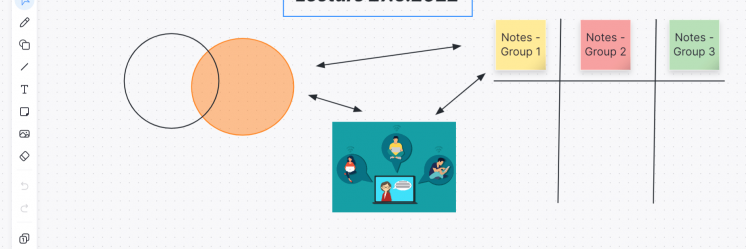Course feedback: aiming for excellence – in wellbeing

Sometimes receiving feedback on teaching can feel difficult or tiring. When the world around us aims for perfection, we tend to think that we have failed somehow if we don´t meet expectations. Teachers strive to help their students, sometimes even at the cost of their own wellbeing. Nobody likes failing, especially if the conditions aren’t what we would have chosen – and we have really tried our best. But is this culture of excellence where we aim for the very best suitable for teaching? Is there such a thing as perfect teaching or a perfect teacher? Should we, instead, aim to identify development possibilities and a growth mindset (versus fixed) since it allows for failure, viewing it as a learning opportunity?
Teaching is something that comes from your person and happens in constant interaction with others. Teachers expose a part of themselves with the way they teach and that is why the feedback at the end might make you feel like you failed in the process. Often, we tend to focus more on the negative feedback, even if there is a lot of very positive feedback, too. Celebrating the positive but at the same time identifying action points from the negative feedback is important. This can be enhanced by learning to listen and making conscious decisions regarding implementing the messages heard. In the optimal case this practice will lead to self-reflection and open communication with the student(s). Both of these will, according to research, add to the wellbeing of both the student and the teacher. Together we can develop teaching and learning: course feedback should be viewed as a tool that the teacher can use to obtain information so that we together with the students can develop teaching and learning so that it works. At the same time this form of working together towards a common goal promotes a sense of belonging.
Course feedback strengthens the teacher´s and student´s agency, creating a frame that fosters interaction and supports teaching and learning. The teacher has the opportunity to choose when and how they collect feedback and they also have the freedom to choose and focus on topics they feel are meaningful. It is crucial to reflect internally on feedback received, as well as to confirm understanding of the feedback. Discussing and responding to the feedback received builds trust, even if it sometimes means that the teacher does not change anything but explains the reasoning behind the choices made. Learn to hear the message and to make conscious decisions on how to use (or not use) the information received. Remember self-compassion, putting pressure on yourself doesn’t lead to better performance in teaching.
How prepare yourself
Before you start a course:
1. Take a look at the previous feedback and reflect on it. The feedback is there to help you improve your course, celebrate it: See the good and acknowledge the development or communication needs.
2. Plan the feedback practices for the course: When, why and how do I collect feedback during the course. This is to ensure that the feedback we collect is useful and timely. What do I as a teacher need to know and when?
During the course:
3. Promote an open feedback culture: Talk to your students about the meaning of feedback. Help them to give constructive feedback that will support your work. Inform them about the feedback practices on your course. In teaching and learning, both teacher and student are responsible actors.
4. Collect feedback when you and your students benefit from it, but keep in mind that you don´t need to act on all suggestions. After receiving the feedback, take a moment and think which of the suggestions require your attention now, which of them later if at all. Sometimes feedback only leads to discussion: when the choices made can be justified, the justifications can be communicated to the students, too.
After the course:
5. Look at the feedback you receive when the course is still fresh in your mind. How can the course and the teaching be developed based on the feedback? Is there a development area that you as a teacher should pay attention to? Is there something outside your authority that should be communicated to or discussed with, for instance, your peers or your superiors?
6. Find a moment to respond to the feedback you received. The students will appreciate it because it is a sign of an open and inclusive teaching and learning culture.
Text: Teacher Services in cooperation with Oasis Tiina Pylkkönen ja Mari Nuottajärvi
Food for thought:
More ideas on how to promote an open and inclusive learning environment:
Agreeing guidelines for inclusive interaction in course | Aalto University
To support the discussions in class – Principles of feedback in education:
Student feedbacks and course development | Aalto University
Information on Oasis of Radical wellbeing –project:
https://www.aalto.fi/en/oasis-of-radical-wellbeing
You can get support in the form of discussion and reflection
Wellbeing Desk | Aalto University
or guidance and more information from our team of pedagogical specialists:
Teacher services | Aalto University
